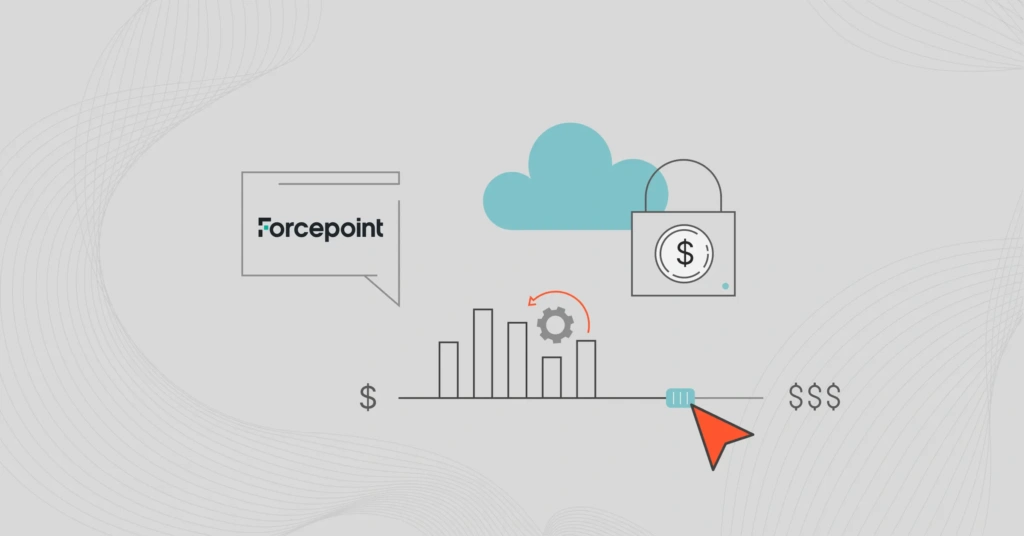Nothing makes us prouder at CloudZero than hearing success stories from our long-term clients. Happily, we have another insightful story to share with you today about a company using the CloudZero platform to achieve their cloud finance goals.
In the video below, Erik Peterson, founder and CTO of CloudZero, speaks with Mike Surma, director of cloud cost optimization for Forcepoint, to find out exactly which tools and features helped his company the most in its FinOps journey.

Here’s What Happened When Forcepoint Began Using The CloudZero Platform
Establishing a FinOps culture came more naturally than it ever had before

Most SaaS companies struggle to establish a positive culture around cost efficiency because they lack the ability to see the granular detail behind where each cost comes from.
Without this knowledge, engineers and finance team members often feel powerless to make meaningful changes, so they become discouraged from even trying.
To solve this problem, Forcepoint approached the five biggest contributors to cloud costs in the company and asked them to explain their workflows and provide some ideas about what would make their spending habits more cost-efficient.
Once they had access to the dashboards, customizable views, and real-time anomaly detection provided by CloudZero, these big spenders were able to take charge of their own cost contributions.
“What we focused on was getting [CloudZero] implemented in our environment where the data that our engineers were consuming meant something to them,” Mike says.
This move made all the difference.
At the end of the day, the engineers just needed to see the data! And perhaps even more importantly, CloudZero’s flexible allocation logic helped each person understand the data and learn how to use it without needing constant oversight.
Mike notes that these positive results “would have been virtually impossible” with a standard tagging strategy. The allocation from tagging is so imperfect and incomplete, it often falls way short of providing valuable and actionable insights. It was the Dimensions capability, with its fine-tuned customization and easy-to-understand graphical representations of the data, that made all the difference in this case.
Engineers used these new tools to make smarter build decisions
The best way to save money is to not spend it in the first place. Or, as Erik points out during the interview, “A well-architected system is a cost-efficient system.”
Forcepoint engineers were able to use the new dashboards and views to see exactly how their choices affected the cost of each product and service they worked on. This knowledge enabled them to alter existing infrastructure where it was needed to boost efficiency and to make more cost efficient choices right off the bat on future projects.
Mike describes how CloudZero data enabled his engineers to choose discounted instances to save some money:
“We went down this really deep rabbit hole to show [engineers] that, yes, 90% of your usage is covered [by reserved instances]. Here are the numbers. Here’s how much money you would have spent in an on-demand equivalent.”
Forcepoint was able to use iterative changes to make big improvements to its FinOps strategy over time

“We took every single account and mapped it to a cost center internally, and mapped it to an owner. And so now we’ve updated all of our Dimensions in CloudZero to represent that mapping of our organization. And that’s how we do allocations,” Mike explains.
Even with just this one endeavor, it took Forcepoint two months of effort to get to the finish line. And most companies have multiple large projects like these that they must tackle during their FinOps journeys.
For a new organization starting out with FinOps, these monumental efforts can seem overwhelming. But Forcepoint was able to make small changes one at a time to achieve continuous improvement in numerous areas of their FinOps strategy.
“I think the thing that we’ve seen most prevalent in the work that we’ve done is that it’s an iterative process. It’s not one and done.”
Mike predicted that marrying usage data and cost data will be important for SaaS companies trying to optimize cloud costs in the future

Traditionally, SaaS companies have a hard time matching usage data up with cost data. And without those one-to-one comparisons, it can be hard to make educated decisions about which resources are cost-effective and which are not.
“I think the thing that we find most challenging … is that the usage data — usage as in CPU and memory use — for the resources that we are provisioning is hard to marry to the cost data,” Mike says.
Overcoming this obstacle is, in his opinion, one of the most important issues SaaS companies will face in the near future.
Mike pointed out that with tools like CloudZero, it’s getting easier for team members to see exactly how much each resource costs the company. Even better, engineers can also receive recommendations for optimizations such as instance rightsizing and other similar adjustments during the course of their everyday workflows. That way, engineers will see and be able to act on these opportunities immediately as they occur.
Embarking On A FinOps Journey Of Your Own? Let CloudZero Light The Way
Whether you’re struggling to get engineers to take accountability for their costs or having trouble allocating your costs in the first place, we can help.
Real-time cost allocation, an intuitive Explorer, AI-powered anomaly detection, and more help companies like Forcepoint jump-start their FinOps maturity by putting cost data in the hands of the people who need it most — engineers.
With CloudZero, the same benefits are within your reach.
 and ask our experts how to replicate Forcepoint’s success in your own business.
and ask our experts how to replicate Forcepoint’s success in your own business.







